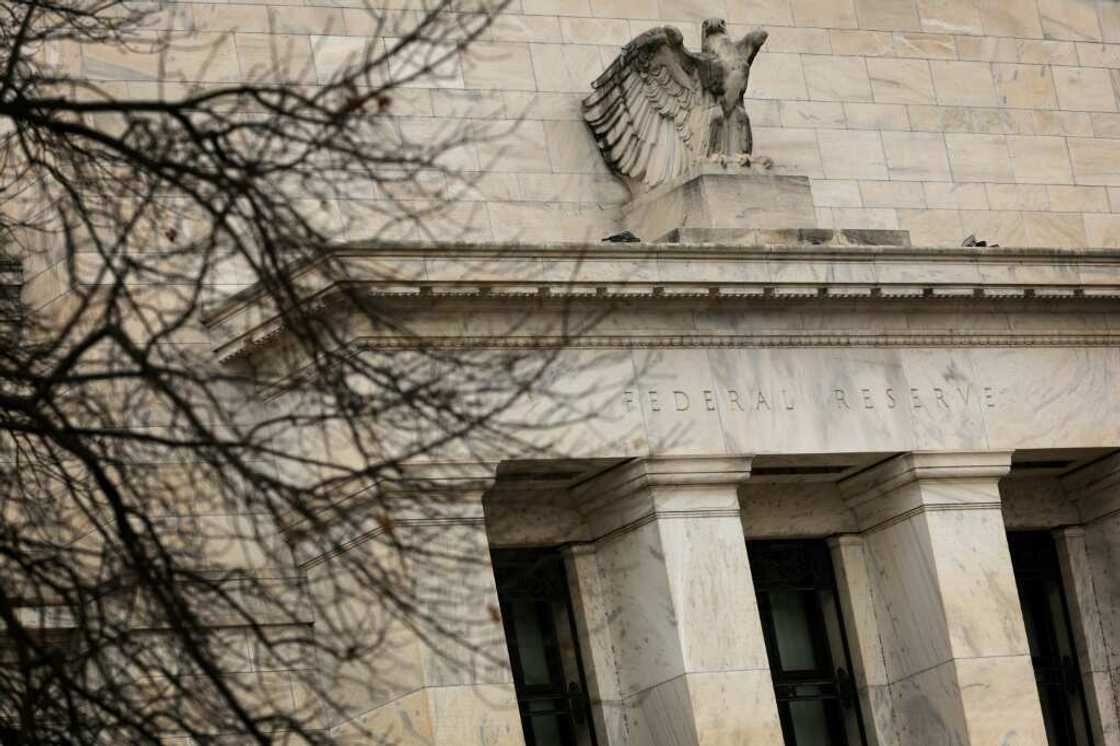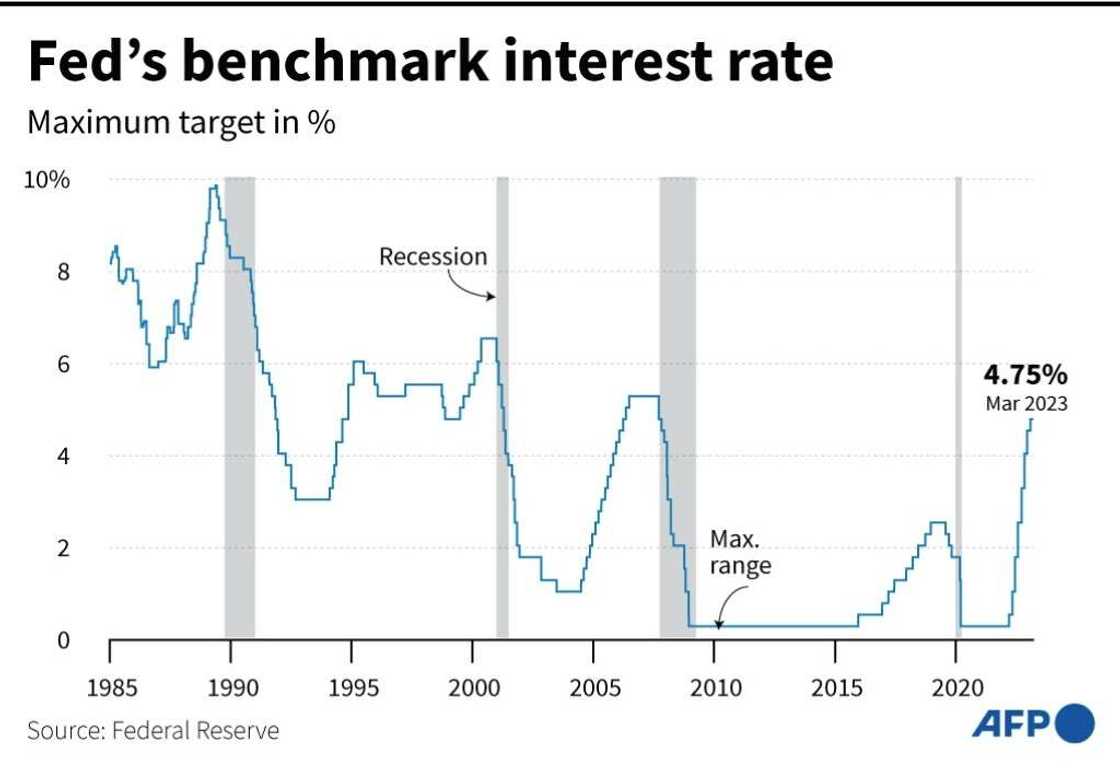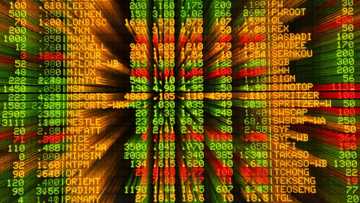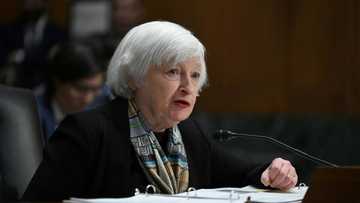US Fed to balance banking woes, inflation in next rate decision

Source: AFP
PAY ATTENTION: Click “See First” under the “Following” tab to see Legit.ng News on your Facebook News Feed!
US central bankers face an unenviable task when they gather in Washington next week: tackling persistent inflation without adding to financial sector turmoil after Silicon Valley Bank's rapid collapse.
The Federal Reserve has raised rates eight times since last year in the face of decades-high inflation as it looks to cool the economy without tipping it into a recession.
While Fed Chair Jerome Powell earlier signaled willingness to speed up interest rate hikes if needed, most analysts and traders see a small rise of 25 basis points as the most likely outcome on Wednesday at the end of the Fed's two-day meeting.
A quarter-percentage-point hike would match the magnitude of the Fed's last increase in February.
With fears of contagion after the rapid failures of three midsized lenders earlier this month, a minority of observers also believe the Fed could halt its rate increases.
A catalyst for the demise of Silicon Valley Bank (SVB) was the Fed's quick shift from near-zero interest rates to steep hikes, a reversal that swiftly lowered the value of SVB's holdings linked to long-term US Treasury bonds.
PAY ATTENTION: Follow us on Instagram - get the most important news directly in your favourite app!
Given the market turbulence, a bigger, 50 basis-point hike is now "off the table," Citigroup global chief economist Nathan Sheets said in an interview with AFP.
"My expectation is, it's going to be 25 but it's going to be a debate -- and where markets are next Tuesday and Wednesday is going to be critical," he said.
From 50 basis points to zero

Source: AFP
SVB's dramatic implosion this month was the largest banking failure since the 2008 financial crisis.
The failure of the California high-tech lender on March 10, and the collapse of New York's Signature Bank a few days later, sparked a rout in regional banking stocks and led many analysts to conclude that the Fed will abandon an anticipated increase in the pace of hikes.
Powell told senators earlier this month that it may be necessary to increase the benchmark lending rate to tame the "widespread" inflationary pressures keeping price rises elevated above the bank's long-run target of two percent.
Futures traders responded by pricing in a 50-basis-point rise, according to CME Group.
But the financial stress brought to light by SVB's failure caused a dramatic turnaround in expectations.
The strains in the financial sector will likely have weakened the Fed's resolve to move more aggressively on March 21 and 22, Bank of America US economist Michael Gapen said on Friday.
"We think recent events have changed the debate," he wrote in a note to clients. "We think the debate is now between a 25 (basis points) rate hike in March, or none at all."
Cooler data emerges
Data for February shows that some corners of the American economy are now beginning to contract -- which eases pressure on the Fed -- while the consumer price index measure of inflation slowed slightly to an annual rate of 6.0 percent.
US retail sales and wholesale prices slipped last month, providing some respite for the Federal Open Market Committee to consider when it mulls another interest-rate hike.
But the Fed's favored measure of inflation showed an annual increase in January, suggesting there is still a long way to go before price rises are brought back under control.
Turmoil in the banking sector is not over either, with many regional banks seeing their stocks plunge again at the end of the week despite intervention by US regulators and some of Wall Street's biggest banks.
"At a minimum, stress in financial markets suggests the Fed should proceed with caution," Bank of America's Gapen said.
Source: AFP





